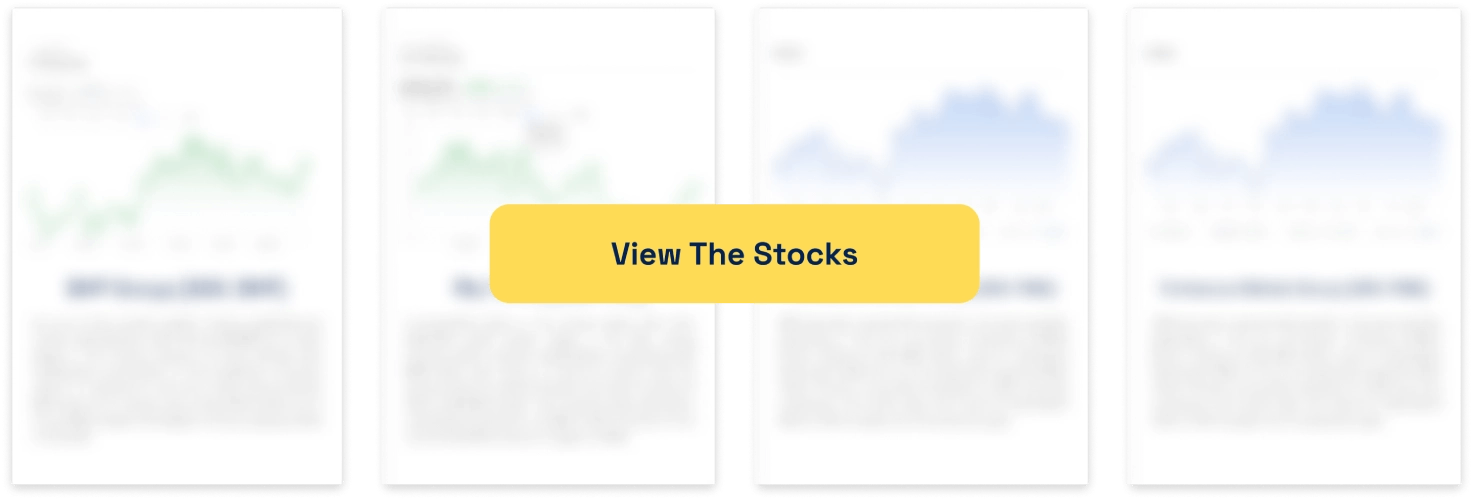Why the RBA Might Sit Tight For Some Time —But Investors Shouldn’t
![]() Ujjwal Maheshwari, April 2, 2025
Ujjwal Maheshwari, April 2, 2025
The Reserve Bank of Australia (RBA) (as widely expected) to held the cash rate steady at its next meeting. Inflation is easing, though not fast enough for comfort, while the economy is limping along with anemic growth and a cautious consumer. On the surface, this might seem like a time for investors to take a breather, too. But we believe that would be a mistake.
In our view, the RBA’s patience shouldn’t be mistaken for market passivity. Behind the pause lies a storm of potential volatility, shifting interest rate expectations, structural economic adjustments, and sectoral winners and losers waiting to emerge.
So, what’s going on beneath the surface?
What’s Driving the RBA’s Decision to Pause?
The Reserve Bank of Australia (RBA) cut rates last month for the first time since 2020, taking the cash rate to 4.10%. Overall, the outlook is uncertain as there are factor pointing to the need for further cuts, but others suggesting the contrary.
Overall, its goal is to return and then keep inflation in the ‘midpoint of the target band on a sustainable basis’. In its statement the board noted that inflation as continuing to ease, but stated that it was not yet back to the aforementioned point. Inflation is back within the 2.4% range, but the risk of cutting rates further risked pouring fuel on the inflation fire.
‘The Board’s assessment is that monetary policy remains restrictive. The continued decline in underlying inflation is welcome, but there are nevertheless risks on both sides and the Board is cautious about the outlook,’ it said in the official statement published on its website.
‘The Board will rely upon the data and the evolving assessment of risks to guide its decisions. In doing so, it will pay close attention to developments in the global economy and financial markets, trends in domestic demand, and the outlook for inflation and the labour market’.
‘The Board is resolute in its determination to sustainably return inflation to target and will do what is necessary to achieve that outcome’.
Why Investors Should Stay on Their Toes
While the RBA’s pause is based on lagging indicators, savvy investors should focus on leading economic signals to anticipate future trends.
Financial markets operate on forward-looking expectations rather than just reacting to current economic data. Equity valuations, bond yields, and currency movements respond to what lies ahead. Currently, there is a growing disconnect between central bank guidance and market expectations. Some analysts are already pricing in potential rate cuts as early as the second half of 2025.
However, RBA Governor Michele Bullock has repeatedly warned that services inflation remains sticky, and external risks, particularly from China’s troubled property sector and volatile global energy markets, could keep inflation elevated for longer than expected.
In this environment, remaining complacent could lead investors to miss key opportunities or, worse, walk into unexpected market traps.
What Assets Might Move Regardless of RBA Inaction?
ASX 200 and Rate-Sensitive Stocks
A steady hand from the RBA may be good news for banks and consumer discretionary stocks in the short term. We’re seeing early signs of this already. Commonwealth Bank of Australia (ASX: CBA) and Westpac (ASX: WBC) have both clawed back some of the ground lost during last year’s tightening cycle.
But don’t mistake relief rallies for sustainable upside. If inflation reaccelerates or global growth falters, cyclical stocks will feel the heat fast.
Bonds and Fixed Income
Australian 10-year bond yields have traded in a volatile range between 3.8–4.4% this year. If the RBA pauses while other central banks like the US Fed begin cutting rates, the AUD could weaken, putting upward pressure on import prices and possibly reigniting inflation concerns.
In our view, fixed-income investors should look closely at inflation-linked bonds or shorter-duration credit instruments that can buffer against any sudden change in rate sentiment.
Real Assets and Commodities
If the RBA maintains its pause while global central banks initiate easing cycles, commodity prices could see renewed strength, particularly in energy, lithium, and copper markets. A weaker AUD could further bolster Australian commodity exports, providing a potential upside for mining stocks. Companies such as South32 (ASX: S32) and Pilbara Minerals (ASX: PLS) stand to benefit, assuming that Chinese demand remains stable and does not experience a significant downturn.
The Global Context: Could the RBA Be Forced to React Later?
Australia’s economic decisions do not exist in isolation. While the RBA may choose to hold rates steady for now, external developments could eventually force its hand.
If the US Federal Reserve or the European Central Bank pivots towards rate cuts sooner than expected, global risk assets could surge. Such a scenario could lead to capital inflows into Australian markets, potentially overheating the property sector. Conversely, if the global economy slows further and commodity prices plummet, the RBA could find itself compelled to cut rates not as a proactive measure, but as a reactive necessity. Under such conditions, investors relying on defensive value stocks or high-yield real estate investment trusts (REITs) could face unexpected setbacks.
Where Should Smart Money Move Now?
We’re not saying it’s time to go all in. But this could be a moment to reposition for what’s coming. While the current economic landscape does not signal an immediate call to action, it does present an opportunity for investors to reposition their portfolios for future shifts rather than reacting to present conditions.
Consider Defensive Growth Stocks
Companies with strong pricing power, robust balance sheets, and stable revenue streams remain attractive. Healthcare giants like CSL Limited (ASX: CSL) and utility providers could provide resilience against economic fluctuations.
Diversify Across Currencies and Geographies
A weaker AUD could make international diversification more attractive. Investing in global exchange-traded funds (ETFs) or Australian companies with substantial offshore revenue exposure can help hedge currency risks.
Watch the Housing Market—But Don’t Chase the Rally
There is growing speculation about a potential recovery in housing prices due to reduced rate pressures. However, affordability remains a key concern, and the market may not see a broad-based rebound. Instead of rushing into real estate investments, investors should monitor construction-related stocks, such as James Hardie (ASX: JHX), and rental demand trends, which may offer more sustainable opportunities.
Could a Pause Be a Hawk in Disguise?
Despite the RBA’s decision to hold rates steady, the tone and wording of its communication will be crucial for market expectations. If the RBA signals that further rate hikes are still a possibility, financial markets could react negatively. On the other hand, even a subtle indication of “disinflation” could ignite a strong rally across asset classes.
In this environment, investors should pay closer attention to the statements made during the RBA Governor’s press conference rather than just the rate decision itself. Nuances in language will likely hold the key to future market movements.
Final Thoughts: Complacency Is the Real Risk
While the RBA’s pause provides temporary relief, it does not eliminate uncertainty. The economic landscape is filled with competing forces, and markets may shift direction well before policymakers make their next move.
This is not a time for a “set-and-forget” investment strategy. Instead, investors should take a proactive approach—rebalancing portfolios, reassessing risk exposure, and preparing for potential shifts in interest rate dynamics and global economic trends.
What are the Best ASX Stocks to invest in right now?
Check our buy/sell tips.
FAQs
- Is the RBA expected to change interest rates this week?
No, most economists forecast that the RBA will leave the cash rate unchanged at 4.35%. However, markets are closely watching for any clues about future rate movements.
- How does the RBA’s decision impact the ASX?
A pause typically supports rate-sensitive sectors like banking and consumer discretionary. But the real driver is investor expectations about future policy. Watch for movements in REITs and utilities as well.
- Should I invest in property if rates stay on hold?
While a pause may ease borrowing costs slightly, property remains expensive. Investors should carefully consider the risks of further rate hikes or economic slowdowns before entering the market.
- Will a pause weaken the Australian dollar?
Possibly. If global central banks start cutting rates before the RBA does, the AUD could weaken, especially if commodity exports slow or inflation expectations rise.
- What are safe investment options during policy uncertainty?
We believe investors should consider defensive growth stocks, diversified ETFs, short-duration bonds, and inflation-linked securities. Staying diversified is key during uncertain policy periods.
Blog Categories
Get Our Top 5 ASX Stocks for FY25
Recent Posts
Telix Pharmaceuticals (ASX:TLX): It’s made ~A$1.7bn in revenue from Illucix, but here’s why the best is yet to come!
What would you have thought if you were told 5 years ago you would see Telix Pharmaceuticals as a successful…
Anti Woke ETFs: Do they practice what they preach and have they outperformed since Trump’s return to power?
Have you ever heard of so-called ‘Anti Woke ETFs’? If you’re sick of companies that are big on ESG, this…
Trump’s Tariffs Are Back in the News—What’s the Impact on Global Supply Chains?
In recent months, the conversation around trade tariffs has re-emerged, with former President Donald Trump’s trade policies making headlines once…



